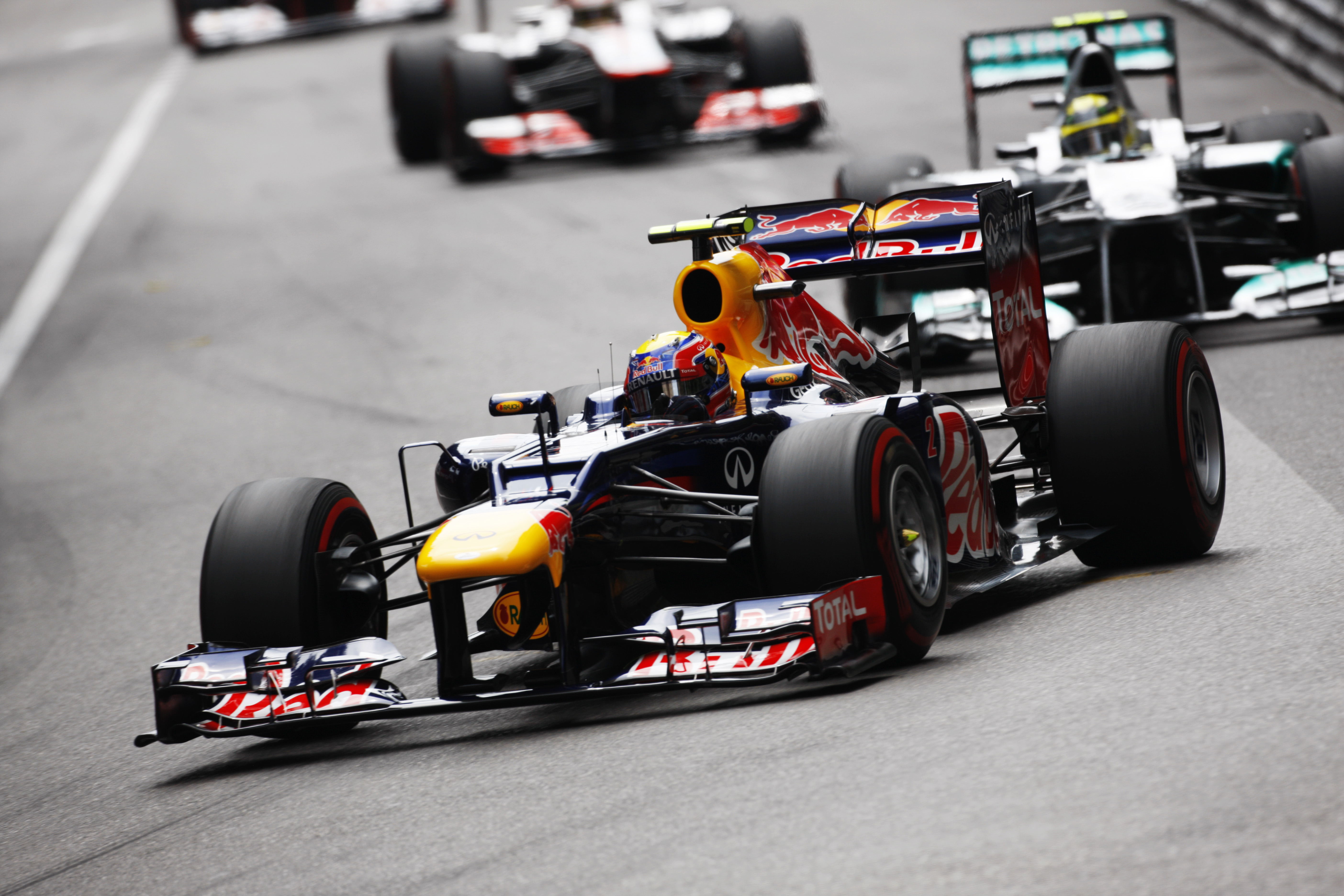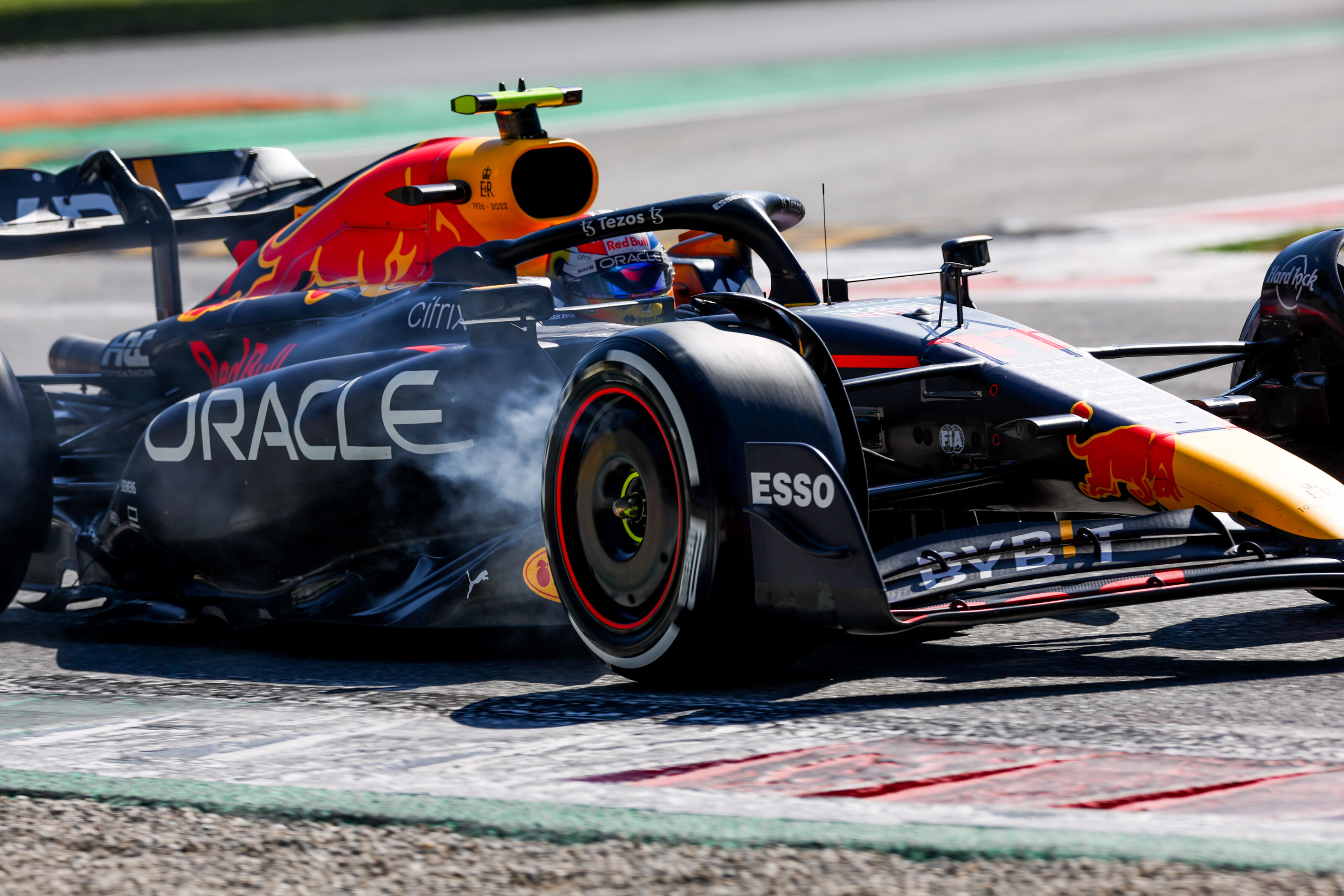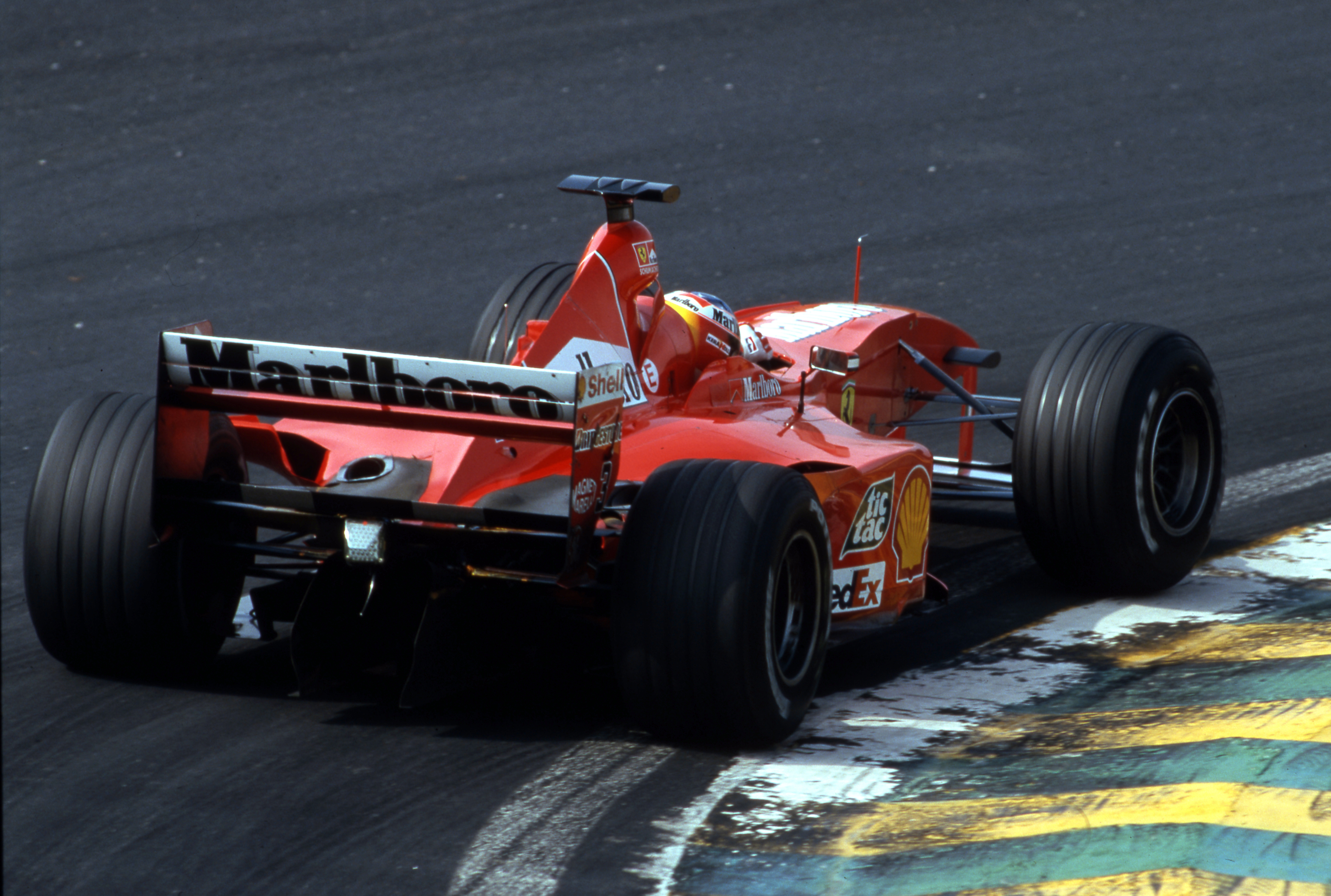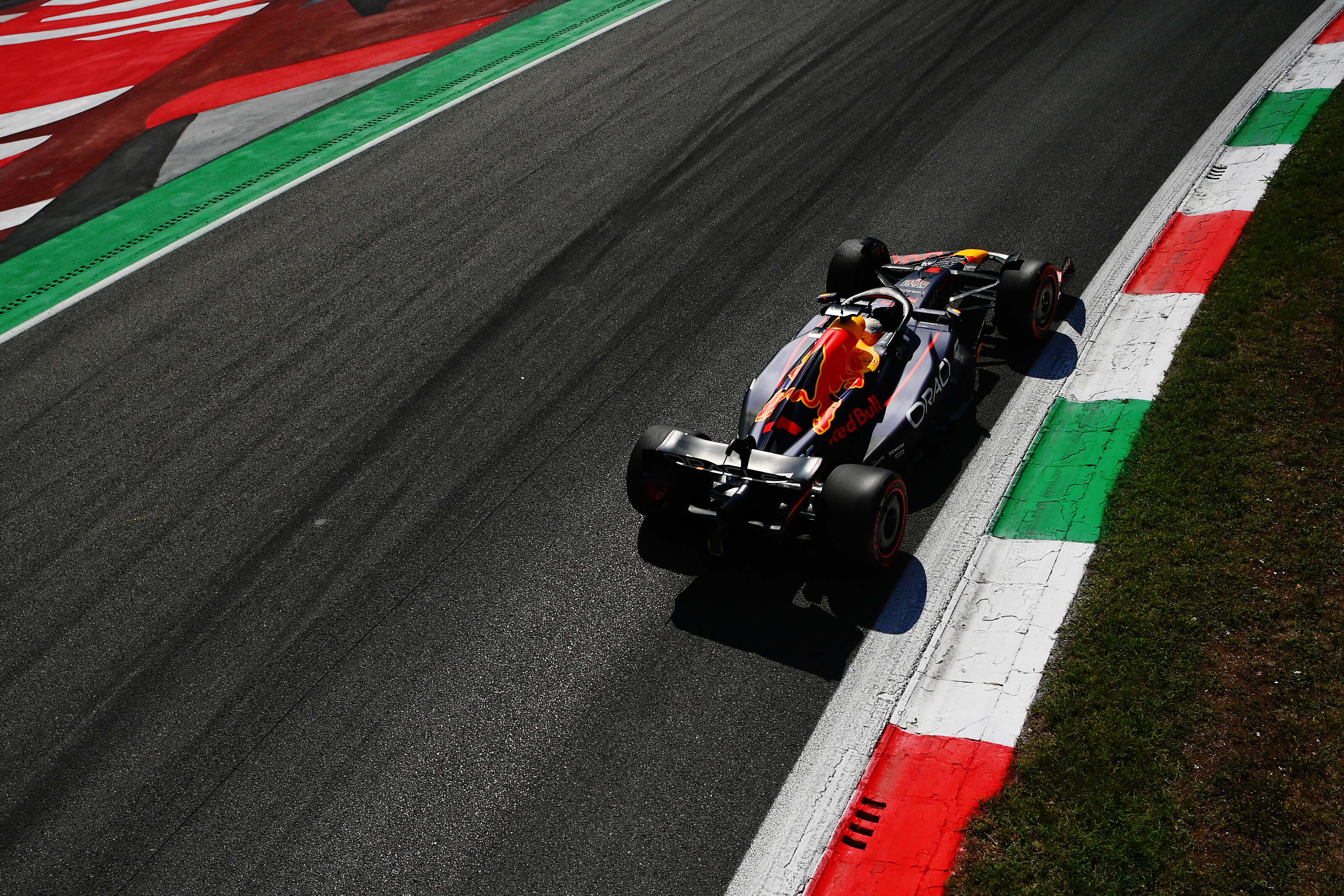Up Next

Every Formula 1 team faces the challenge of producing a car that both drivers can get the best out of. But Red Bull’s situation is an extreme one, with the exceptional Max Verstappen able to live with a car balance that most can’t and Sergio Perez getting more and more off the pace as the season goes on.
It’s not the first time that Red Bull has ended up in this sort of quandary. When exhaust blowing was a big thing in 2012 but the FIA attempted to kerb it, Red Bull produced a car that had great potential but the exhaust blowing didn’t work as intended for the first part of the season. Sebastian Vettel struggled during that period and team-mate Mark Webber looked like he’d rediscovered his mojo and had the upper hand.

Mark was very good in a well-balanced car, but struggled to get that extra bit out of it with exhaust blowing. Keeping the throttle open and, even as the car would start to oversteer mid-corner, coming back on the throttle was alien to him. But Vettel was at home with this as it would stabilise the rear of the car. Watching trackside when it was all working as designed, Vettel was able to get back onto the power four or five car lengths before Webber.
Jenson Button was another driver who didn’t have any confidence if the car balance was towards oversteer. He needed that little bit of built-in understeer, but understeer with grip so that if you apply a little more steering lock the car will turn more and not just understeer more.
That’s what most drivers prefer, but the drivers that really stand out can live with a little bit of oversteer and, in general, it will make the car that little bit faster. It might be better not to classify it as oversteer but instead use American terminology and think of it as being a little bit ‘loose’, so the rear axle isn’t pushing the front axle.
As a rule, I always tried to produce a consistent and useable car that wasn’t too peaky aerodynamically to allow drivers to be confident. As I always say, if the car is erratic then you can only drive to the troughs. But it’s clear with Red Bull that what is a consistently accessible peak for Verstappen is a trough for Perez.
Red Bull and Perez are working hard to find a set-up that works for him, but admit it can come at a performance cost. That’s fine if he is losing, say, two tenths of a second to Verstappen because of that compromise. But when Verstappen is upwards of six tenths faster in the same basic car then that’s a bit too much. Red Bull has clearly, and rightly, decided to make Verstappen its development focus with Perez there to accumulate points as the number two.
We always hear a lot about the weight of these cars and how difficult it is to get down to the minimum weight. Weight is a penalty of around three tenths of a second per 10kg. I very much doubt that the difference between Max’s car and Sergio’s is as much as that, although 5kg wouldn’t surprise me. With the current performance, if you have lighter parts who are you going to give them to? So we can’t rule out the possibility that Perez is running a slightly heavier car.

However, it’s not just as simple as the overall weight. If a few lighter parts allow you to get the weight distribution as far forward as the regulations allow, then because of that extra weight on the front axle it will allow you to run more front downforce. Provided the airflow structure of the car is sound, which I’m sure it is, then that will give you more overall downforce. If you can get a tenth from here and another tenth from there, they soon add up. Max is simply the driver who goes out and uses it well.
There are those who interpret this as one driver being unfairly favoured over the other, but that’s not the case. A team will always focus around the quicker driver, which is Verstappen, because it makes no sense to focus your development on making the car quicker for the slower driver. The way to avoid being in that situation is to be the better driver in the team.
If you have a competitive car, which Red Bull does, it’s easier to win the drivers’ championship when you have one dominant driver who is a true number one. If the performance of your two drivers is too close, they can snatch points off each other and others can benefit. The classic example of that is Williams drivers Nigel Mansell and Nelson Piquet losing the drivers’ championship in 1986 to Alain Prost in a slower McLaren.
But to win the constructors’ championship requires two cars scoring good points. That means the ideal line-up is probably a number one driver with a couple of tenths advantage over their team-mate and a team-mate who accepts their status and knows they probably have the second-best drive in the pitlane. Unfortunately, egos can get in the way of something as simple as that.
Life would be very boring if we were all exactly the same. Some drivers can live with an understeery car and some can live with a oversteery car. Any characteristic is only quicker if you can use it, regardless of what the theoretical performance is.

One thing I always say about Michael Schumacher is that he drove the car he had on a Sunday afternoon. Within a couple of laps, he would be at ease with the balance of the car and if that meant a little earlier turn in because of understeer or a less aggressive turn in because of oversteer then that’s what he did. I think Verstappen is very similar, but might just not be able to live with the understeer quite as well as Schumacher did.
A car with a little oversteer means that you are not asking the front axle to generate all of the rotation. If 10% of the required rotation can be accomplished by the rear being that little bit freer, then it reduces the workload on the front tyres. This also means that the car will be straighter earlier as the corner opens up, allowing the throttle to be opened earlier.
For a long time, Perez was called the ‘tyre whisperer’ when he was driving for Force India/Racing Point. This was because he was able to look after the tyres as well as, if not better than, most and that was because it was the rear tyres that would overheat much earlier than the fronts. That understeery balance fitted in well with his driving style. But it was very seldom enough to be right on it at the front from lap one. A lot of his best results came to him as the race played out.
If I was in Red Bull’s shoes, I wouldn’t change a thing because of the old saying ‘if it ain’t broke, don’t fix it’.

There are very few Max Verstappens out there. If you know how to cater for his needs, then as a team you know you have a driver that will use every tenth of a second he can find – and on top of that tenth will find more besides. That’s what the best drivers do.
That puts Perez in a difficult position but one that anyone who has been team-mate to one of the absolute greats will be familiar with. The very best drivers unlock more performance and can live with faster but trickier cars. As Red Bull has said, by making the car a little bit better suited to Perez it makes him faster but does sacrifice the overall performance potential available to Verstappen on the other side of the garage.
Unfortunately for Perez, that’s just the laws of physics.






